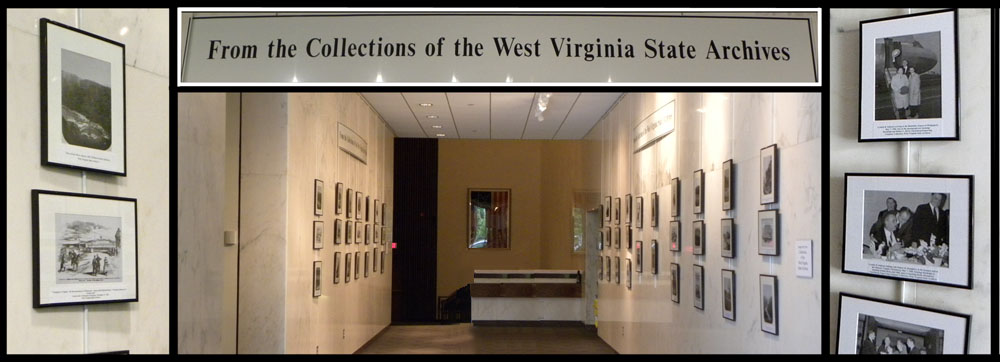The Statehood exhibit was on display in the Archives and History Photo Gallery between April and October 2013.
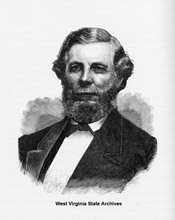 | Lithograph, George Arnold of Lewis County was elected to the Legislature of Virginia in 1861. He served as a delegate for the Restored Government and was on the committee that drafted a bill for the formation of a new state. Prominent Men of West Virginia, West Virginia State Archives
|
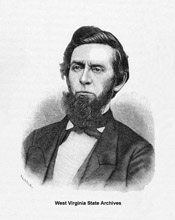 | Lithograph, John H. Atkinson, a businessman and attorney from Hancock County, was a delegate to the First and Second Wheeling conventions and served as a state senator for West Virginia upon its formation. Prominent Men of West Virginia, West Virginia State Archives
|
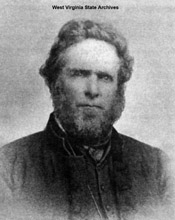 | Photograph, Gordon Battelle, a Methodist minister in Wheeling, served as chaplain of the First West Virginia Infantry. He was elected a delegate to the Constitutional Convention and proposed several amendments addressing the abolition of slavery in West Virginia. Rending of Virginia, West Virginia State Archives |
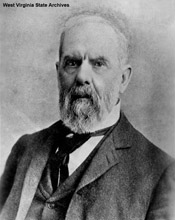 | Photograph, Jacob Beeson Blair, a Parkersburg native, was selected to fill a congressional seat before the outbreak of civil war, and was re-elected in 1863. Congressman Blair was instrumental in convincing President Lincoln of the necessity of signing the statehood bill. Portrait File, West Virginia State Archives
|
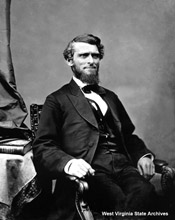 | Photograph, Arthur I. Boreman, who practiced law in Parkersburg prior to the Civil War, served as president of the Second Wheeling Convention. In 1863 he became the first governor of West Virginia, and he would later serve as United States senator. Portrait File, West Virginia State Archives
|
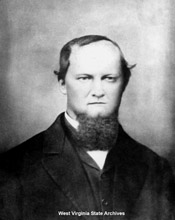 | Painting, J. Edgar Boyers of Tyler County was elected as the first secretary of state of West Virginia. Portrait File, West Virginia State Archives |
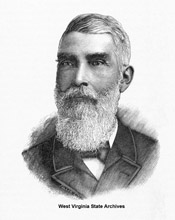 | Lithograph, James H. Brown of Kanawha County was a delegate to the Constitutional Convention. On May 28, 1863, he was elected a judge for the Supreme Court of Appeals of West Virginia. Prominent Men of West Virginia, West Virginia State Archives |
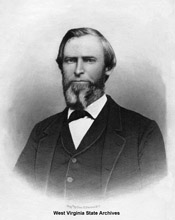 | Lithograph, John J. Brown of Preston County served as a delegate to the Second Wheeling Convention and the Constitutional Convention, and he was elected to the State Senate in 1863. History of Monongalia County, West Virginia State Archives
|
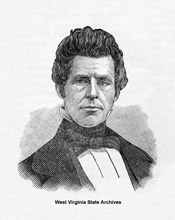 | Lithograph, William G. Brown of Preston County served in the House of Delegates and was elected to the United States House of Representatives in 1844. He was a delegate to both the 1850-51 constitutional convention and the Richmond Convention in 1861. Brown was later a congressman for the Reorganized Government of Virginia and West Virginia. History of Preston County, West Virginia, West Virginia State Archives
|
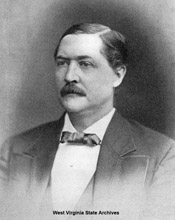 | Photograph, Archibald Campbell, the editor of the Wheeling Intelligencer at the time of the Civil War, used the newspaper to further the statehood effort. He is considered one of the founders of West Virginia despite having never held political office. Rending of Virginia, West Virginia State Archives
|
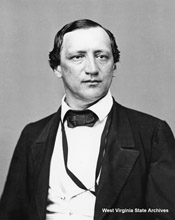 | Photograph, John Carlile, who resided in Clarksburg, served as a delegate to the Richmond Convention and was outspoken in his opposition to secession. He returned to western Virginia to rally support for the Union, served as a delegate to the First Wheeling Convention, and was selected as a United States senator for the Reorganized Government of Virginia. As a member of the Committee on Territories, he drafted the statehood bill. Carlile made dramatic changes and it became evident that he no longer supported the new state effort. He voted against statehood, ending his political career. Portrait File, West Virginia State Archives
|
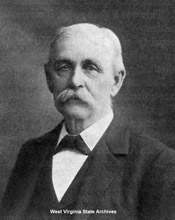 | Photograph, Gibson Cranmer of Wheeling served as a delegate to the First Wheeling Convention and was elected permanent clerk of the House of Delegates of the Reorganized Government of Virginia. He was later secretary of the first session of the Second Wheeling Convention and appointed temporary secretary of the Constitutional Convention. Rending of Virginia, West Virginia State Archives
|
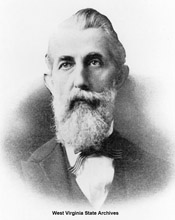 | Photograph, John J. Davis of Harrison County was a delegate to the First and Second Wheeling conventions and served in the House of Delegates for the Reorganized Government of Virginia. Portrait File, West Virginia State Archives |
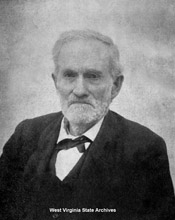 | Photograph, Spencer Dayton of Barbour County served as a delegate to the First and Second Wheeling conventions. He was later elected to the West Virginia State Senate. History of Barbour County, West Virginia State Archives
|
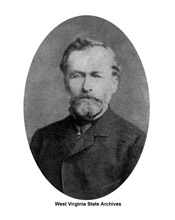 | Photograph, Joseph H. Diss Debar of Doddridge County was a French immigrant who served as a delegate in the Restored Government of Virginia and the West Virginia State Legislature. He also designed the new state's seal and served as Commissioner of Immigration for West Virginia. Portrait File, West Virginia State Archives
|
 | Photograph, Henry Dering of Monongalia County was elected as a delegate to the Constitutional Convention, where he chaired a committee that worked out a compromise between northern and southern delegates on internal improvements. Portrait File, West Virginia State Archives
|
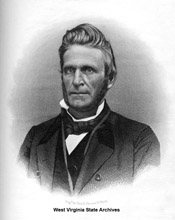 | Lithograph, John A. Dille of Preston County was a delegate to the Constitutional Convention, where he served on the Judiciary Committee and the Committee on County Organization. On the last day of the recalled session, he was elected vice-president of the Convention. History of Monongalia County, West Virginia State Archives
|
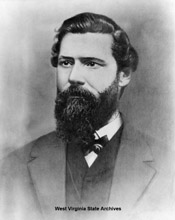 | Painting, Daniel D. T. Farnsworth represented Upshur County in the Second Wheeling Convention and was elected to the House of Delegates for the Reorganized Government of Virginia. Farnsworth later served in the West Virginia State Senate and became president of that body. When Arthur Boreman resigned as governor to join the United States Senate, Farnsworth became governor for five days. Portrait File, West Virginia State Archives
|
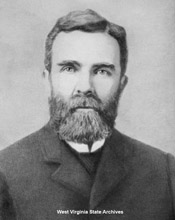 | Photograph, Granville Davisson Hall of Harrison County worked as a reporter for The Wheeling Daily Intelligencer. In addition to attending and reporting on the Wheeling conventions, Hall also recorded the proceedings and debates of the Constitutional Convention. After the formation of West Virginia, he was elected clerk of the House of Delegates. In 1864, he was elected secretary of state. He later wrote Rending of Virginia, a history of the statehood process. Portrait File, West Virginia State Archives
|
 | Lithograph, Sylvanus W. Hall of Marion County served as assistant clerk of the Constitutional Convention. From 1863 to 1874 he was clerk of the West Virginia Supreme Court of Appeals. Prominent Men of West Virginia, West Virginia State Archives |
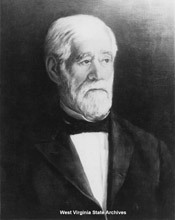 | Painting, Thomas W. Harrison from Harrison County was a delegate to the Constitutional Convention. Portrait File, West Virginia State Archives |
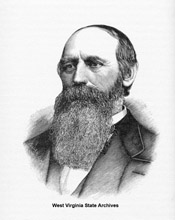 | Lithograph, Judge John Jay Jackson of Wood County, the son of General John Jay Jackson, also served as a delegate to the First Wheeling Convention. He later served as a federal judge. Prominent Men of West Virginia, West Virginia State Archives |
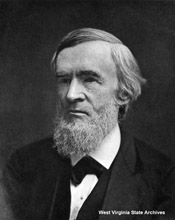 | Photograph, Daniel Lamb of Wheeling was a delegate to the First and Second Wheeling conventions. He also chaired the Legislative Committee of the Constitutional Convention. Lamb was later elected to the first West Virginia Legislature. Portrait File, West Virginia State Archives |
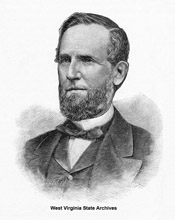 | Lithograph, James C. McGrew from Preston County was a delegate at the Richmond Convention who voted against secession. McGrew was a member of the first West Virginia Legislature. He later served two terms in Congress. Prominent Men of West Virginia, West Virginia State Archives
|
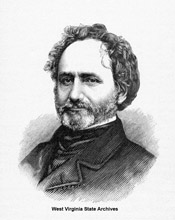 | Lithograph, Granville Parker of Cabell County served as a delegate to the Constitutional Convention. He later published The Formation of West Virginia and Other Incidents in the Civil War. Prominent Men of West Virginia, West Virginia State Archives
|
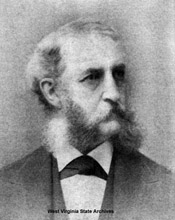 | Photograph, James Paxton of Wheeling was a delegate to the First and Second Wheeling conventions. Paxton served in the Constitutional Convention as the chairman of the Committee on Finance and Taxation. Rending of Virginia, West Virginia State Archives |
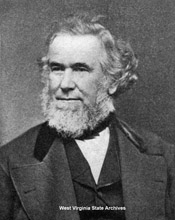 | Photograph, Francis H. Pierpont of Marion County is also known as the "Father of West Virginia." Pierpont served in the First and Second Wheeling conventions. During the second one, he was elected as governor of the Reorganized Government of Virginia. Rending of Virginia, West Virginia State Archives |
 | Photograph, David S. Pinnell of Upshur County was appointed in the recalled session of the Constitutional Convention to fill the vacancy caused by the resignation of Richard L. Brooks. In addition to serving as a legislator, Pinnell was an assistant surgeon in the Third West Virginia Cavalry. Portrait File, West Virginia State Archives |
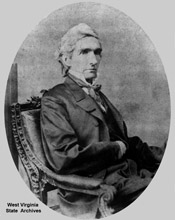 | Photograph, Daniel Polsley represented Mason County in the First and Second Wheeling conventions. At the second convention, Polsley was elected as lieutenant governor to the Reorganized Government of Virginia. Portrait File, West Virginia State Archives |
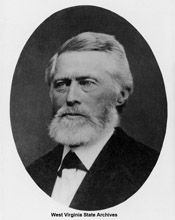 | Photograph, Josiah Simmons of Randolph County was a delegate to the Constitutional Convention. Portrait File, West Virginia State Archives |
 | Painting, William E. Stevenson represented Wood County in the First Wheeling Convention and was also a delegate to the Constitutional Convention. He became the third governor of West Virginia in 1869. Portrait File, West Virginia State Archives
|
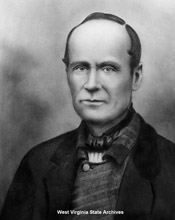 | Painting, Felix Sutton represented Braxton County in the first state legislature of West Virginia from 1863-1864. Portrait File, West Virginia State Archives |
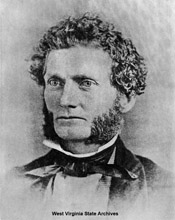 | Photograph, Campbell Tarr, a native of Wellsburg, was a delegate to the Richmond Convention who opposed secession. Tarr later represented Brooke County during the First and Second Wheeling conventions. At the second convention he was elected state treasurer of the Reorganized Government of Virginia. Portrait File, West Virginia State Archives |
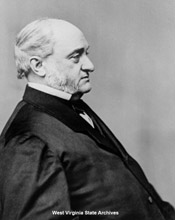 | Photograph, Peter Van Winkle was a member of the Second Wheeling Convention who later played a prominent role in the Constitutional Convention. Van Winkle, who was one of the first two United States senators from West Virginia, voted against the impeachment of Andrew Johnson. Portrait File, West Virginia State Archives
|
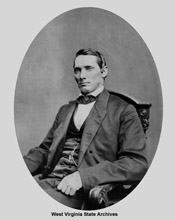 | Photograph, Kellian V. Whaley commanded the Ninth West Virginia Infantry. Although Whaley was captured at Guyandotte in 1861 by Confederate raiders, he escaped and made his way to Union lines. Whaley was elected to the United States House of Representatives for the Reorganized Government of Virginia. He later became one of West Virginia's first congressmen. Portrait File, West Virginia State Archives
|
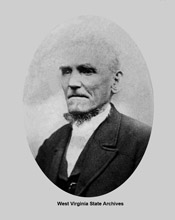 | Photograph, Joseph S. Wheat represented Morgan County in the recalled session of the Constitutional Convention. He later served as a delegate in the first West Virginia Legislature. Portrait File, West Virginia State Archives
|
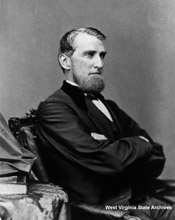 | Photograph, Waitman T. Willey of Monongalia County served as a delegate to the Richmond Convention, where he voted against secession. Willey was a delegate to the First Wheeling Convention and the Constitutional Convention. He was elected as a United States senator for the Reorganized Government of Virginia. Willey's amendment that provided for the gradual emancipation of slaves paved the way for Senate approval of the statehood bill. Willey was then elected as one of the first two United States senators from West Virginia. Portrait File, West Virginia State Archives
|
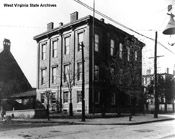 | Photograph, Linsly Institute, which served as the first capitol of the new state of West Virginia. Cabinet File, West Virginia State Archives |
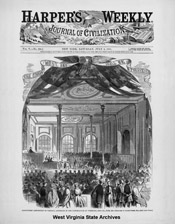 | Illustration, Delegates at the Second Wheeling Convention, June 11-25, 1861. Harper's Weekly, West Virginia State Archives
|
 | Illustration, Custom House at Wheeling, seat of Restored Government of Virginia. Frank Leslie's Illustrated Newspaper, West Virginia State Archives
|
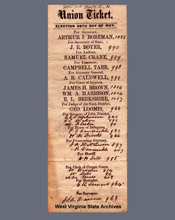 | Document, Ballot for the Union ticket for the first election of West Virginia officials, May 28, 1863. Wheeling Artificial Collection, West Virginia State Archives
|
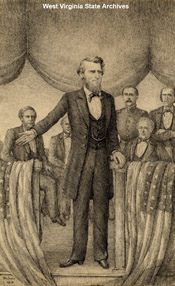 | Illustration, Arthur I. Boreman drawing by Joseph H. Diss Debar of the Parkersburg lawyer, circuit judge, and first governor of West Virginia, inaugurating the new state at Wheeling, June 20, 1863. Diss Debar Collection, West Virginia State Archives
|
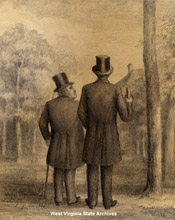 | Illustration, Abraham Lincoln and Peter G. Van Winkle drawing by Joseph H. Diss Debar showing the president walking and discussing West Virginia affairs with Senator Van Winkle, June 1864. Diss Debar Collection, West Virginia State Archives
|
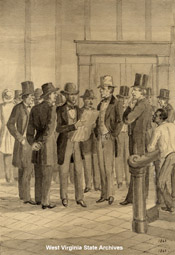 | Illustration, Drawing by Joseph H. Diss Debar of uncertain news from the seat of war, in the hall of the McClure House, Wheeling, 1863. The group in the foreground is composed of William E. Stevenson, president of the State Senate, later governor, on the right. Next is the tall form of Lee Roy Kramer, of Monongalia (chairman of House of Delegates in 1864) and reading the paper is James C. McGrew, member for Preston County, and later representative in Congress. On his right, with his hands clasped behind him is A. W. Campbell, editor of the Wheeling Intelligencer. Diss Debar Collection, West Virginia State Archives
|
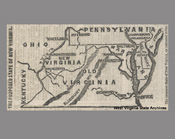 | Map, Proposed State of New Virginia, New York Herald, May 18, 1861
|
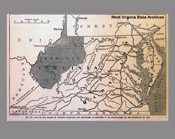 | Map, Proposed State of Kanawha, Frank Leslie's Pictorial History of the American Civil War, 1862
|
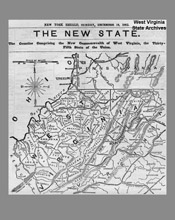 | Map, New State of West Virginia, New York Herald, December 14, 1862
|

